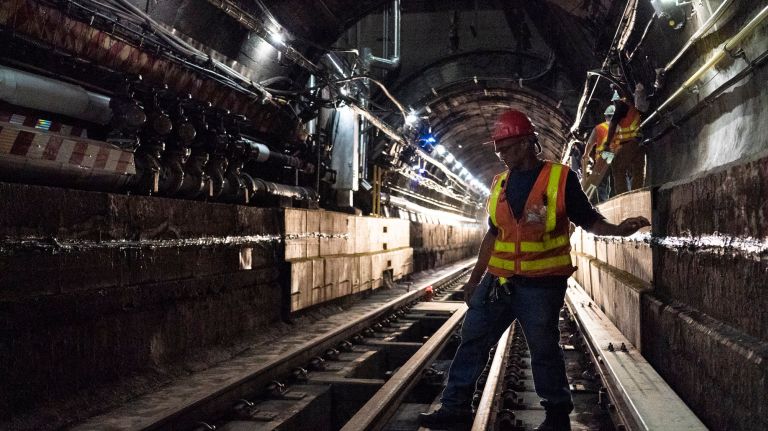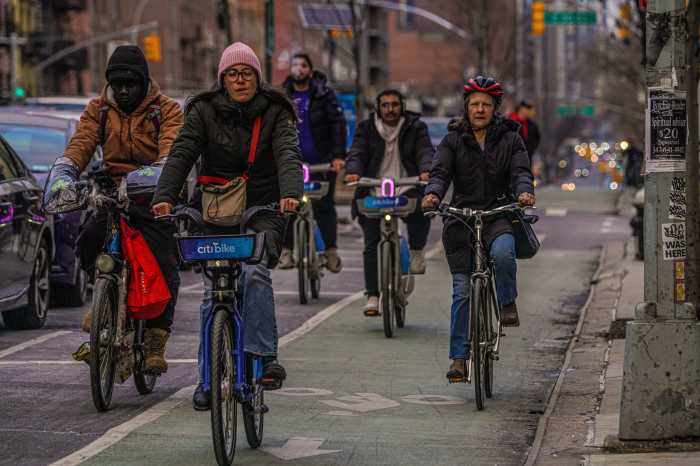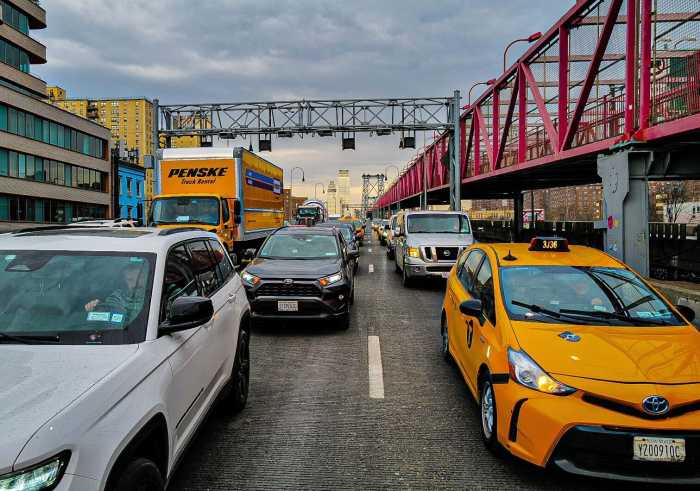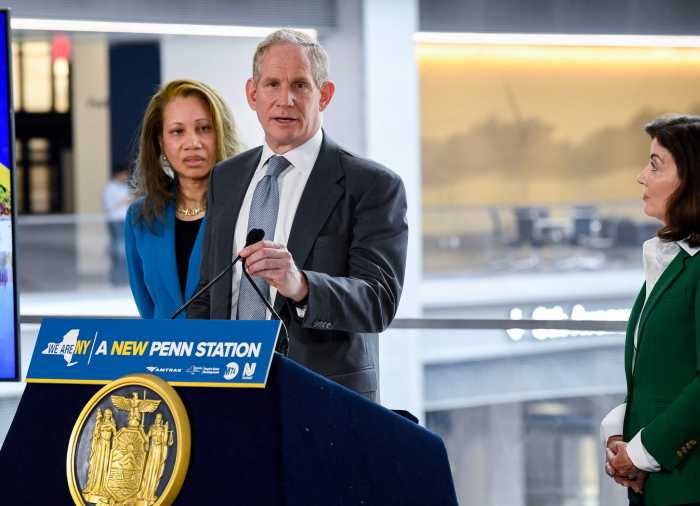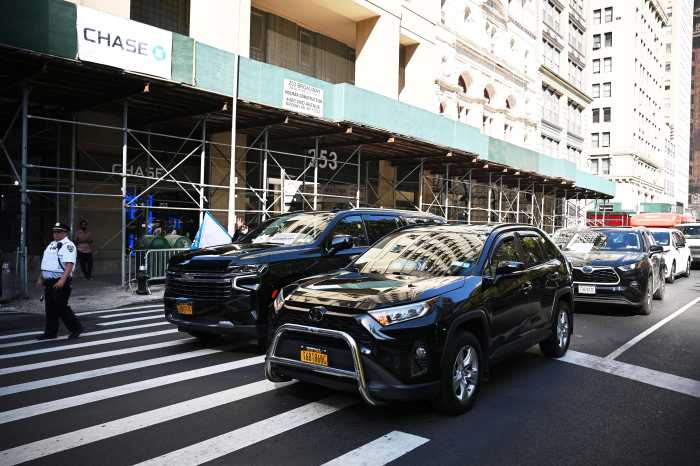
The L train “slowdown” is ending early.
The MTA now plans to wrap up Canarsie Tunnel rehabilitation work and relaunch full L train service by April 2020 — roughly three months ahead of schedule, Gov. Andrew Cuomo announced Sunday.
“The L train itself is a phenomenal piece of work and innovation, and I truly applaud the people who are doing what was impossible,” said Cuomo during a media tour of the tunnel Sunday morning.
Work crews have recently wrapped up work on the first tunnel tube and will move to fortify the second tube next week.

The project reduced L service beginning in late April and was originally expected to be completed next summer — in 15-to-18 months — to the tune of roughly $500 million.
The state-controlled MTA has remained opaque regarding the project’s costs, and questions linger over the permanence of the repairs. Janno Lieber, the authority’s chief development officer, on Sunday stated only that the project would be completed under the original budget and assured that the construction will fortify the tunnel for another century.
L train service has been reduced to 20-minute intervals on nights and weekends from Bedford Avenue through Manhattan as crews work on what was a last-minute change to plans to repair the tunnel. The tunnel was damaged by severe flooding during Hurricane Sandy in 2012.
Once the project is completed, there will be one remaining weekend service outage on the line, according to the governor’s office.
Last winter Cuomo convened a panel of engineering academics, who in a matter of weeks came up with a new rehabilitation plan that avoided a full shutdown of L service to and through Manhattan — a strategy that was years in the making.

Cuomo announced the new approach just months before the closure was to take place.
Instead of completely rebuilding the damaged concrete bench wall, which lines the tunnel tubes and was crumbling onto the tracks, contractors are sealing off those sections with a fiber-reinforced polymer. The communications cables that were once encased in the bench wall were instead hung on new metal racks installed on the wall of the tunnel — a strategy more typical in subway systems with narrow train tunnels.
There have been doubts that this strategy would last as long as a full reconstruction of the bench wall. During a January MTA board meeting, consultants said the original plan would have been a better bet for the tunnel — even if it proved far more disruptive to the roughly 250,000 daily riders who rely on the L to get between Manhattan and Brooklyn.
“It certainly would have been advantageous for long-term service life to completely tear out the duct banks and completely replace them,” said Mike Abrahams, an engineer at WSP, the consulting firm that pitched the original plan and is now overseeing the new reconstruction. “There are certainly surface-life advantages to doing that.”
Under the new work, the MTA has installed 7,000 feet of fiberoptic cable along the bench wall to sense any irregularities and alert the MTA of a potential hazard. The newly mounted cables have been wrapped in a fire-resistant coating.
The MTA has also rebuilt a pump room to help more efficiently remove water from the tunnel. It’s adding substations to increase the electrical power along the line to allow the authority to run more trains once service is restored.
Lieber and Cuomo both described the project as a teaching moment for the MTA. The governor reiterated his criticisms of the MTA, which he has described as a bloated bureaucracy that did not do enough to study alternatives to a full shutdown.
“Had they rebuilt [the tunnel] just as it was, you’re replacing 100-year-old engineering, today,” Cuomo said. “Why would you do that?”
For riders most impacted by the work, it could be difficult to appreciate Sunday’s announcement when about half-a year’s worth of disruptions remained.
Eleanor Morris, a musician and instructor who lives off the L and commutes to gigs at all hours of the week, said she could have to bake in more than an additional hour to get around on nights and weekends. Morris said she’s lost jobs and had to switch rehearsal spaces because of difficulties relying on the L during nights and weekends.
“If I’m on a train after 10 p.m., I know it’s going to take me an hour and a half to two hours to make a 52-minute trip,” Morris said, adding that she tries to take the M as an alternative as much as possible.
Gary Bundary, a janitor who commutes on the L, from his East New York home to Bedford Avenue, welcomes even the few months shaved off the projects. Bundary said he was appreciative of his understanding boss, who tolerates him occasionally showing up 15 to 20 minutes late due to the uncertainty of his off-hours commute on the L.
“I’ll take three months,” Bundary said, “because honestly the weekends are where I go through hell.”



